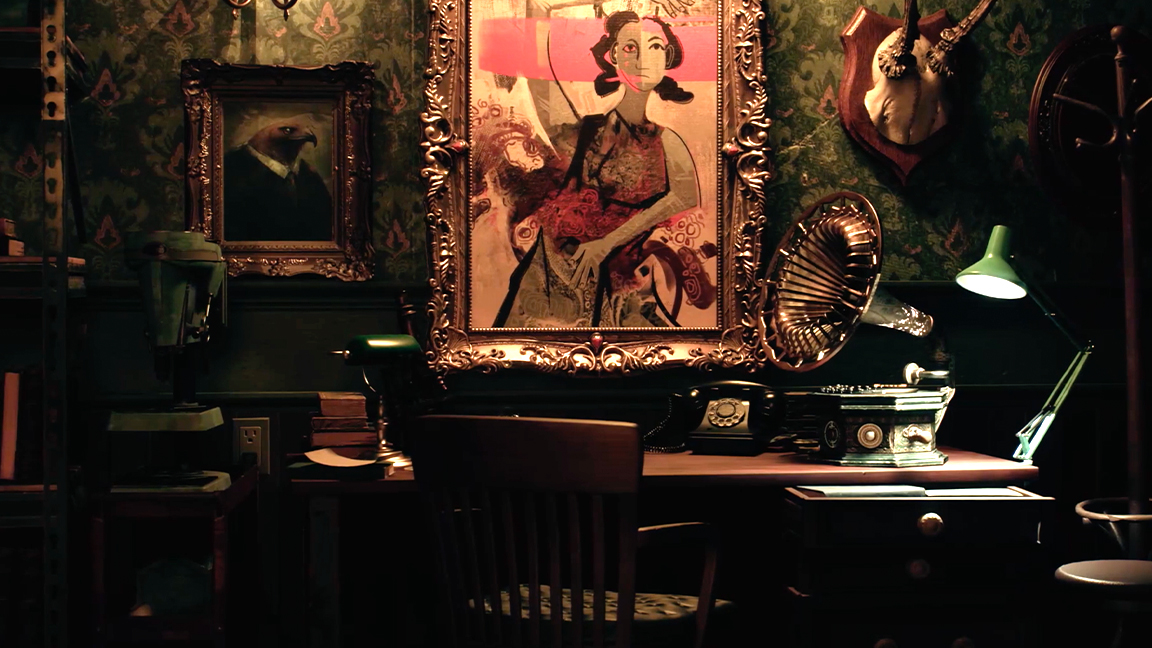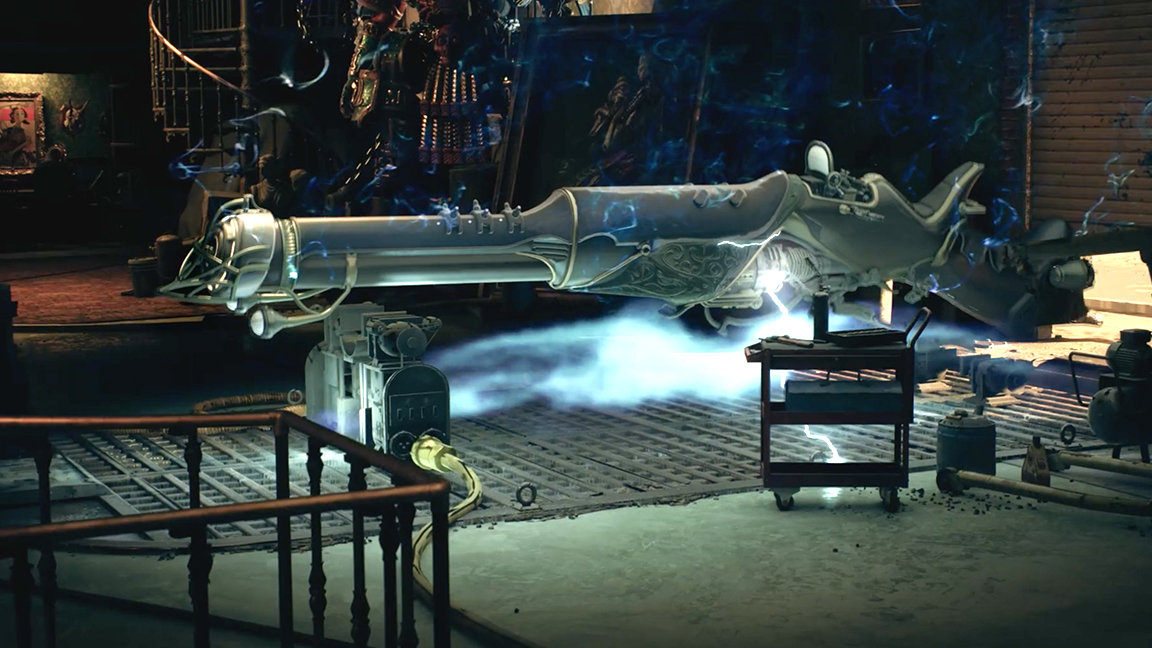How to land your first job in game art

How to get your dream job in game art? You could start at game art, design and production studio Atomhawk, which remains one of the UK industry's best kept secrets. Despite working on some of the biggest video game franchises, from Helldivers 2 to Halo and the recently released Still Wakes The Deep, few new artists name-check Atomhawk as the place they want to work, but they should.
"From the amount of awards we've won, and we've been around for 15 years, I think we're the best kept secret in the UK," laughs studio director Darren Yeomans as we catch-up following his talk at The VFX Festival, adding, "it's ridiculous."
But being able to quietly go about supporting some of the world's biggest games studios ensures Atomhawk is a good place for new artists to learn the ropes and get a break in a competitive industry. For a time Atomhawk was considered just a 2D concept art studio, but in recent years it has become full a spectrum support team, creating everything from early concept art to 3D models, animation, technical art, UI and UX design and marketing.
Getting started in the games industry
So what does it take to get into Atomhawk, particularly in the current climate where studios are closing and redundancies are happening constantly? Firstly, says Darren, "it's not a given that that you'll get a job in the industry. There are lots of people fighting that want to get in".
But don't be put off, I soon discover this is Darren's style, he doesn't hold back and never sugar-coats bad news, and this kind of honesty is important. Being more specific, Darren advices to "get good at the thing [you] love, get good at your craft […] then look at diversifying," he says.
Embrace change and be prepared to learn new things is crucial, shares Darren, saying: "One of the first things I learned in the industry, because I've been in it since 1992, is that you're constantly learning. There's always that new tool that's coming out, always that new engine that's coming out."

To get into the games industry and succeed you need to be flexible and committed to change. A self-taught 3D artist, Darren tells me when he first arrived at Atomhawk six years ago it was a 2D art studio, and colleagues "would look upon 3D as almost cheating" and how it somehow "took away from the craft".
Daily design news, reviews, how-tos and more, as picked by the editors.
But, he says, 3D is "part of the craft, it's a really good tool to use to enable you to get quicker results in the creative flow that you were going anyway. So don't be afraid of using different things, and use them to get your end result".
Darren adds: "You still need to know the fundamentals to make something work and to make it look right. So you've still got to have that eye; you've still got to know what makes a good scene; you've still got to know about proportion and lighting, and it will help you get there quicker."
How to get noticed
Raw talent matters to Darren more than anything else. Which is why he tells me to get noticed you need a great portfolio, and this means you needn't have a degree or masters in art, you may not even have been in further education, if your portfolio is good Darren and the Atomhawk team will take you seriously.
"For us, at Atomhawk, when we get an application through we go straight to the portfolio link, says Darren. "That's all we're interested in. If it's great, we'll have a chat. Or, if it's got something in there that one of the other artists, one of the art directors, sees something in it, the we'll have a chat."
A good portfolio matters because it's a leveller, no matter your background, and from speaking with Darren, if the art is good you get a shot. He explains, "So you know, if you are a talented person, and and naturally talented, or if you're one of these people who just just doesn't get on with the academic side of something, but you're just great at doing art, or you do great animation, your natural skill will come through".

Making a difference, follow your passion
As we talk, this belief that talented people deserve a chance and support becomes overwhelming. Darren, as he tells me he himself, dropped out of university to teach himself 3D art, and in the process taught others along the way. Crucially, though, if you're from an "ordinary" working class or minority background, you often don't get the opportunities in the games industry, explains Darren.
"One of the things I'm passionate about, obviously, is of getting more people of colour into the industry and that kind of demographic, and it's more difficult to convince the parents that it's a viable career," says Darren with urgency. "Because lots of schools have started cutting down on creative [classes] and technology because of cutbacks. So trying to convince the parents that their child should carry on being creative and should carry on drawing, because there is that great career they could have, is very difficult."
Darren tells me how he grew up in this environment, how as a child he grew up in Birmingham's Chelmsley Wood district, which has a reputation for being "a really rough area of Birmingham". During his childhood Darren says times were hard, with few resources or facilities.

He tells me: "So, you know, if someone from that kind of background, I just went to a normal school, I I loved art, and I watched the teachers look at me as if I fell out the sky, because they was like, 'Well, you're not gonna get a job doing that', but, you know, I did."
And more up to date, as an arts teacher in Kidderminster, another mixed demographics of kids and cultures, Darren tells me "there was only one black face in my class of 35 kids". He adds how in the second year group of 28 children, again "there's only one black face".
He sighs and says, "Again, it's just because it wasn't seen as a viable thing that you could go into. So that's the barriers you have to break".
To put this into a broader context, outside of the UK, the IDGA Developer Satisfaction Survey (2021), revealed only 4% of game developers globally identified as Black, African American, African or Afro-Caribbean. (Read more in Atomhawk's interview with Darren and artist Panashe Mataruse.)
It's why Darren dedicates his time to visiting schools, travelling up and down the UK to show up and explain to students that being an artist, and being an artist in the video games industry, is an achievable goal for anyone. "They have to see it for themselves. I have to show myself, you know, it's like, I've physically done this. Look at me, I've been able to do it, you can too," he says.
Once in the studio, the learning really starts
Once that big break happens you start your dream job in the games industry, that's when learning really begins. It starts with getting into the right mindset and understanding how to fit into a team. "We've got to make sure that mix is right for the studio," begins Darren, before saying: "Nobody wants a talented asshole in the studio. It doesn't matter how great you are, if you don't fit in with the mindset and how we all want to help each other [you'll struggle]."
He tells me how everyone in interviews say they want to learn, and laughs, "but you'd be surprised how many actually want to do that". So being in the right frame of mind and genuinely wanting to learn new skills is vital, as Darren adds: "We do push [artists] out their comfort zones, because then they realise you're not only developing their skills, but also their personal skillset grows, and the company grows through that".

Atomhawk is a large studio that covers ever aspect of game production. But it's interesting to note that seasoned artists who's skill sets are "off the scale" are almost treated similarly to new starters - everyone is here to learn new ideas.
It's one of the reason's Atomhawk began work on its own IP, called Project Smoke. This project encouraged artists to step out of their comfort zones and try new tools and approaches, from asking 2D artists to master 3D modelling skills to learning the the nuances of working with Unreal Engine 5.
This was a funded studio project, which means Project Smoke was treated like a commercial project, with aim of keep Atomhawk's artists fresh and giving them room to try new tools and kills. Darren explains: "So it gives people a bit of a like a freshener between projects, or if they've been on a project for the long term, you know, we can take them off and say, well, just gone this for a couple of weeks, and it just kind of almost like a sorbet during kind of breaks that up."
The short film quietly demos all the talents of the studio, from weapon design to VFX. And for a studio that often works under tight NDAs for many different studios, this is the ideal way to showcase the team's talents. "So as well as the training, it's a really good tool to show our clients," says Darren.
To learn more about the issues of diversity raised by Darren Yeomans, visit the Bame In Games website and POC In Play, an independent organisation raising the visibility and representation of people of colour in the video games industry. More generally, visit the Atomhawk resources website for careers advice.

Ian Dean is Editor, Digital Arts & 3D at Creative Bloq, and the former editor of many leading magazines. These titles included ImagineFX, 3D World and video game titles Play and Official PlayStation Magazine. Ian launched Xbox magazine X360 and edited PlayStation World. For Creative Bloq, Ian combines his experiences to bring the latest news on digital art, VFX and video games and tech, and in his spare time he doodles in Procreate, ArtRage, and Rebelle while finding time to play Xbox and PS5.
